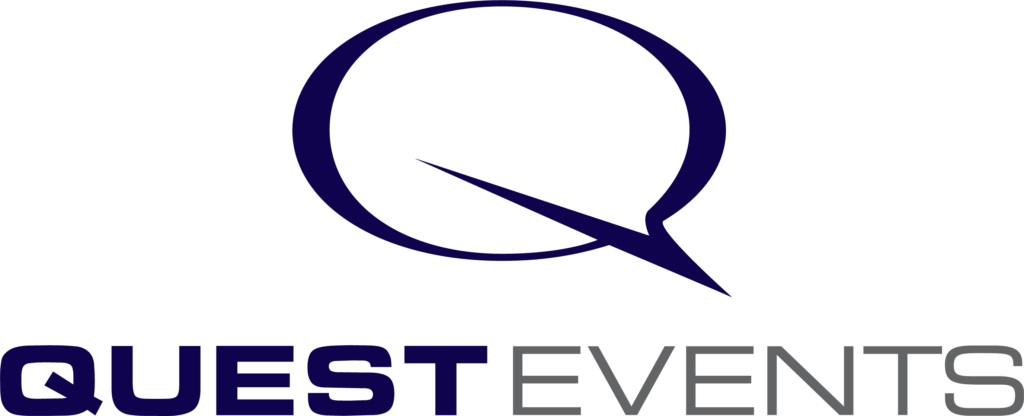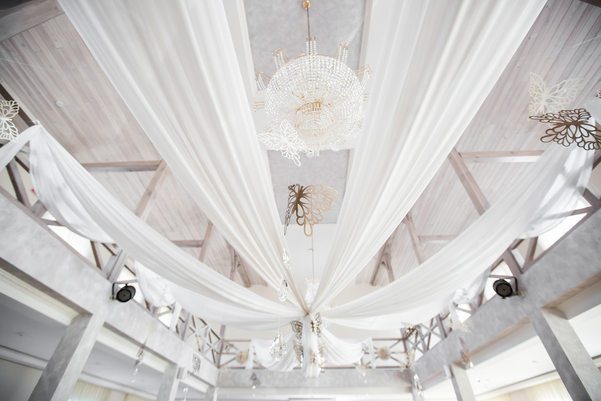- Introduction to Drape Safety and Compliance
- Understanding the Basics of Drape Safety
- Key Drape Safety Regulations
- Best Practices for Drape Safety
- Potential Risks of Non-compliance
- Legal Consequences of Non-compliance
- Ensuring Drape Safety: A Comprehensive Checklist
- Conclusion: The Importance of Drape Safety and Compliance
- Resources for Event Organizers
- FAQs
Welcome, event aficionados! If you’re delving into the glamorous world of events, one aspect that might not have the shimmer of spotlights but is undeniably crucial is Drape Safety and Compliance. Behind the curtains (pun intended) lies a realm of regulations and best practices that ensures every swish of fabric is elegant and safe.
Introduction to Drape Safety and Compliance
Overview of Drape Safety and Compliance
At Quest Events, our commitment goes beyond just renting out equipment; it’s about ensuring each event is memorable and safe. Drapes, often seen as the elegant backdrop for various events, come with safety and compliance requirements. Ensuring these are adhered to is crucial for an event’s overall success and safety. In this guide, we’ll delve into the nuances of drape safety so you can put up a show without any hitches.
Importance of Drape Safety in Event Organizations
Safety is paramount, especially when organizing an event that hosts numerous guests. Proper drape safety ensures that:
- Accidents are minimized: Proper installation and maintenance can prevent unfortunate accidents such as drapes falling or catching fire.
- The event remains uninterrupted: Safety violations can cause disruptions, leading to negative guest experiences.
- Reputation still needs to be revised: With safety compliance, event organizers build a reputation for professionalism and attention to detail.
Understanding the Basics of Drape Safety
Understanding Drape Materials and Fire Safety
Drapes can be made from various materials, each with its characteristics. When considering fire safety:
- Inherent Flame Retardant (IFR) fabrics: These materials are woven in a way that they are naturally resistant to fire. This doesn’t mean they can’t catch fire but won’t contribute to its spread.
- Treated Fabrics: Unlike IFR fabrics, these materials are treated after weaving to make them flame retardant. They require periodic testing to ensure they retain their flame-resistant qualities.
- Non-flame Retardant fabrics: These materials have neither been woven nor treated to resist flames. They are best avoided in event settings.
Remember, just because a fabric is flame retardant doesn’t mean it’s foolproof. Always ensure adequate distance between the drapes and any heat or flame source.
The Role of Drape Safety in Event Planning
Drape safety is not just about the material or the installation; it’s an integral part of the event planning process. Consider the following:
- Event Design: When conceptualizing your event, ensure the drapes are positioned away from potential fire hazards. Also, provide enough space for them to be hung without obstruction.
- Vendor Selection: Choose vendors, like Quest Events, who prioritize safety and clearly understand regulations and standards.
- Emergency Planning: Always have an emergency plan in place. This includes having fire extinguishers accessible and ensuring all event staff know evacuation procedures.
Key Drape Safety Regulations
National Fire Protection Association (NFPA) Standards
NFPA standards provide guidelines on the fire safety aspects of various materials, including drapes. Here’s a quick breakdown:
- NFPA 701: This standard applies to textiles and films, including drapes, used in public spaces. A fabric that passes the tests outlined in this standard is considered flame retardant.
- NFPA 705: A field test method for textiles, including drapes, ensuring they meet minimum fire protection standards.
Event organizers must ensure that their drapes adhere to these standards, ensuring safety and compliance.
State and Local Regulations
Apart from national standards, states or municipalities might have their own set of regulations related to drape safety. Always check local laws before setting up, as they can vary and might have specific requirements.
Drape Certification Standards
Event drapes are often required to undergo specific tests to ensure their safety. Certified drapes guarantee peace of mind for event organizers and affirm that the material in use complies with all requisite standards.
- Certification Labels: Check for labels on drapes that confirm they have been tested and meet the required fire safety standards. Always ask for certification from your rental company if it’s not immediately visible.
- Renewal and Expiry: Some certifications, especially for treated fabrics, have an expiry date. Always be aware of these dates and renew certificates as required.
- Vendor Responsibility: Reputable vendors like Quest Events always ensure their drapes are up to date with all certifications. However, it always helps for event organizers to double-check!
Best Practices for Drape Safety
Proper Installation of Event Drapes
An elegantly draped backdrop can elevate any event, but its installation must be secure and safe.
- Secure Anchoring: Always ensure that the drape rigging is securely anchored. If using a freestanding setup, ensure that bases are heavy and stable enough to support the drapes.
- Avoid Overloading: Drapes have a weight limit. Always be cautious and only hang additional items like lights or decorations after considering the weight restrictions.
- Professional Installation: While DIY can be tempting to save costs, professional installation ensures that safety standards are upheld. Quest Events, for example, provides efficient rental solutions and installation services that adhere to safety protocols.
Routine Inspection and Maintenance
Regular checks and maintenance can extend the life of your drapes and ensure their safety.
- Before the Event: Before any event, inspect the drapes for any wear and tear, ensuring there’s no risk of them falling or tearing during the event.
- Cleanliness: Dirty drapes can be more flammable. Ensure your drapes are clean and free from accumulated dust or debris.
- Post-Event Inspection: After the event, check for any damages. This ensures the drapes’ longevity and prepares them for their subsequent use.
Compliance with Fire Safety Guidelines
Fire safety is a crucial aspect of drape safety.
- Keep Away from Heat Sources: Always ensure drapes are safe from candles, lights, or other heat sources to prevent fire hazards.
- Use Fire Retardants: If the drapes are not inherently fire-resistant, consider using fire retardants. These can be sprayed or applied to the drapes to increase fire resistance.
- Emergency Protocols: Always have a fire safety protocol in place. Ensure fire extinguishers are accessible and train the event team to use them.
Potential Risks of Non-compliance
The Risk of Non-compliance
Non-compliance doesn’t only mean potential legal repercussions. It can also put lives at risk.
- Financial Repercussions: Non-compliance can lead to hefty fines, affecting the event’s overall budget.
- Reputation Damage: Safety incidents can severely tarnish the reputation of event organizers, leading to decreased trust and potential loss of business in the future.
- Risk to Life: More importantly, non-compliance can lead to accidents, posing risks to guests and staff at the event.
Possible Event Drape Safety Violations
An event can violate drape safety standards in several ways, intentionally or unintentionally.
- Using Non-certified Drapes: Always ensure the drapes are certified for fire resistance.
- Improper Installation: Drapes that need to be securely installed pose a falling risk.
- Ignoring Local Regulations: Not checking or following local drape safety regulations can lead to safety violations and legal consequences.
Legal Consequences of Non-compliance
Legal Penalties for Non-compliance
Navigating the world of event planning comes with its share of responsibilities. Non-compliance with drape safety regulations doesn’t just risk safety; it carries legal ramifications.
- Fines and Penalties: Local and state governments can impose significant fines on event organizers who fail to comply with safety regulations.
- Revocation of Licenses: Consistent non-compliance can result in the cancellation of business or event licenses, hampering your ability to organize future events.
- Legal Lawsuits: In case of accidents arising due to non-compliance, event organizers can face lawsuits, leading to substantial financial liabilities and damage to reputation.
Ensuring Drape Safety: A Comprehensive Checklist
Pre-Event Safety Checklist
Before the magic begins, there’s a checklist every event organizer should run through to ensure safety.
- Drape Inspection: Ensure that drapes are free from damage and wear and tear.
- Certification Check: Confirm that the drapes have the required fire safety certifications and are still valid.
- Installation Plan: Have a clear plan for drape installation, ensuring that they are securely anchored and kept away from potential hazards.
During-Event Safety Measures
Constantly vigilance ensures that everything runs smoothly once the event is in full swing.
- Regular Monitoring: Assign staff to monitor the drapes, especially if there are elements like live performances that could pose risks.
- Easy Access to Fire Extinguishers: Ensure that fire extinguishers are within reach and that the event staff knows their locations and how to use them.
- Emergency Protocols: Have a clear evacuation plan and ensure that all exits are accessible and not obstructed by the drapes or other equipment.
Post-Event Safety Validation
When the curtains fall, the responsibility doesn’t end.
- Drape Inspection: After the event, inspect the drapes for any signs of damage or wear.
- Feedback Loop: Gather feedback from the staff about any challenges faced during the event related to drape safety. This can help in planning future events.
- Storage: If the drapes are to be reused, ensure they’re stored in a clean, dry place to maintain their longevity and safety.
Conclusion: The Importance of Drape Safety and Compliance
Recap on Drape Safety and Compliance
Having traversed the world of drape safety and compliance, one thing is clear: Safety is non-negotiable. It’s not just about adhering to rules but about ensuring the well-being of every single person at the event. Quest Events prides itself on its commitment to safety, ensuring that each event is not just a spectacle but a secure environment for all.
Future Trends in Drape Safety Regulations
The realm of safety is ever-evolving, with advancements in materials and technologies.
- Eco-friendly Fire Retardants: As the world leans towards sustainability, the future might see the development of eco-friendly fire retardants that are safe for the environment.
- Smart Monitoring Systems: With technological advancements, systems may be in place to monitor drape safety in real time, sending alerts if there’s a potential risk.
- Stricter Regulations: As events grander, local and state governments will implement even more stringent regulations to ensure the highest safety standards.
Resources for Event Organizers
Helpful Websites for More Information
In the age of information, staying updated is paramount. Here are some recommended websites that can be invaluable for event organizers:
- National Fire Protection Association (NFPA): The primary source for all standards related to fire safety, including those concerning drapes.
- Event Safety Alliance: A comprehensive resource dedicated to ensuring safety at events. They cover various topics, from crowd management to structural safety, including drape safety.
- Local Government Websites: Always check your city or state’s official website for specific guidelines or regulations that national standards might not cover.
- Quest Events Blog: We regularly update our blog with the latest in event trends, safety tips, and more. It’s a must-visit for any event organizer wanting to stay at the top of their game.
Training and Certification Opportunities
Staying informed is one thing, but formal training can equip you and your team with practical knowledge.
- NFPA Training Programs: They offer training sessions and certifications focusing on various aspects of fire safety.
- Event Safety Workshops: Many organizations, like the Event Safety Alliance, offer workshops focusing on overall event safety, including drape safety.
- Vendor Training: Some vendors, including Quest Events, offer training sessions for their clients to ensure their products’ optimal and safe use.
FAQs
What’s the difference between Inherently Flame Retardant (IFR) and Treated Fabrics?
IFR fabrics are naturally fire-resistant, whereas treated fabrics are made flame-resistant after their production using chemicals or treatments.
How often should I check the certification of my drapes?
This largely depends on the type of fabric and its treatment. However, for treated fabrics, it’s good practice to check them annually or before any significant event.
Are all drapes provided by Quest Events compliant with safety standards?
Absolutely! At Quest Events, we prioritize the safety and satisfaction of our clients. All our drapes adhere to national and, where applicable, local safety standards.
What should I do if I suspect my drapes are no longer safe?
If you suspect your drapes might be compromised, it’s best to consult with a professional or the vendor. It might be time to replace or treat them to ensure safety.
How do I know if my event’s location has specific drape safety regulations beyond the national standards?
It’s always a wise move to consult the local fire department or municipality’s website in the area where your event will take place. They typically provide specific guidelines for event safety. Additionally, partnering with a knowledgeable vendor, like Quest Events, can guide you through regional specifics to ensure complete compliance.


